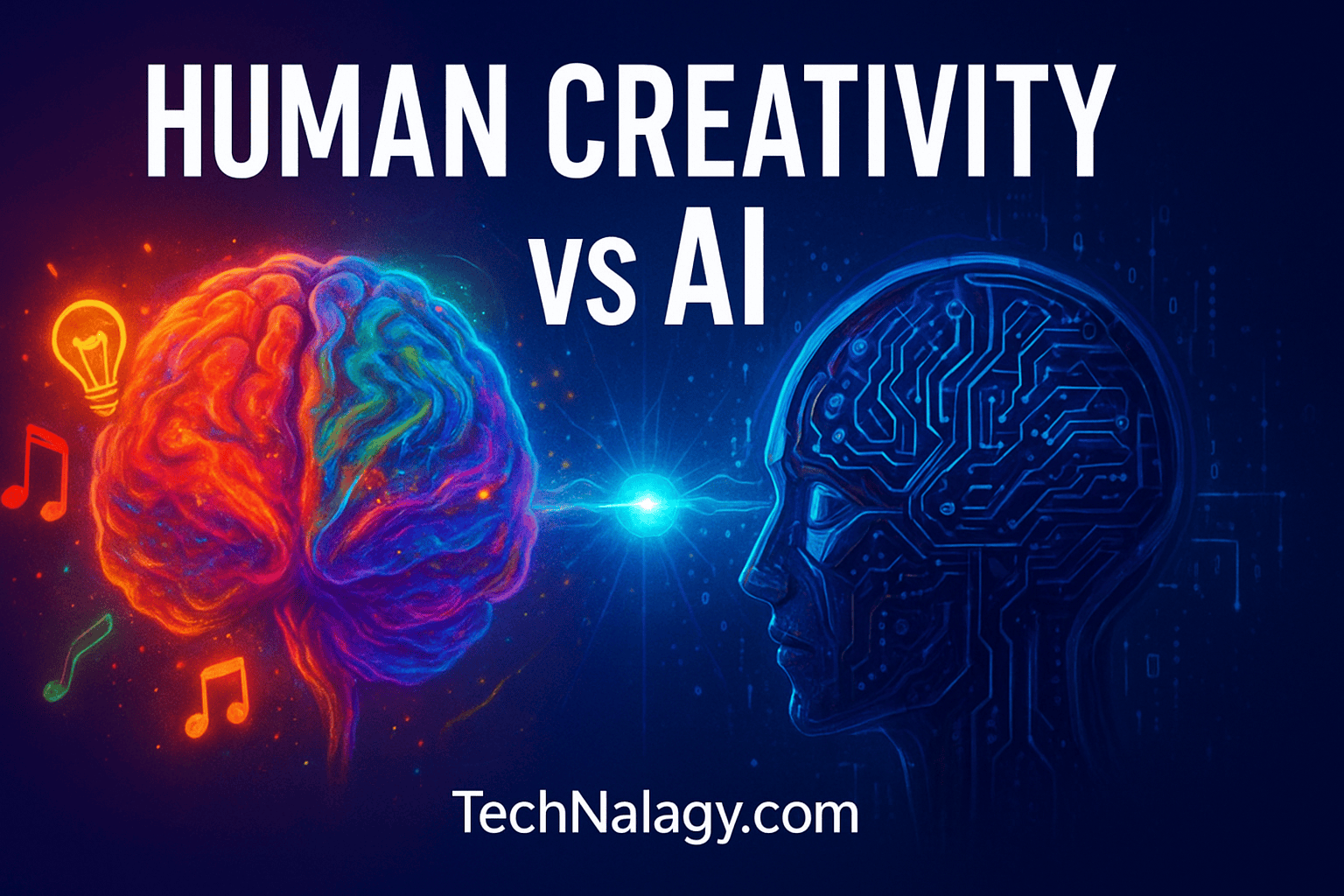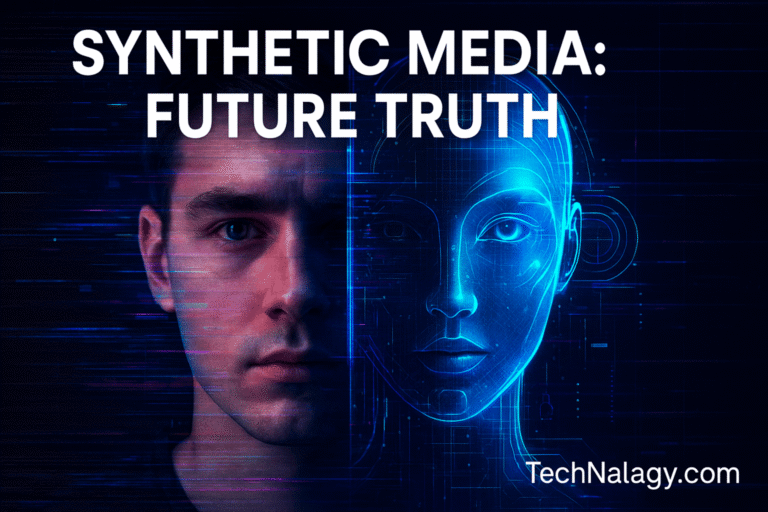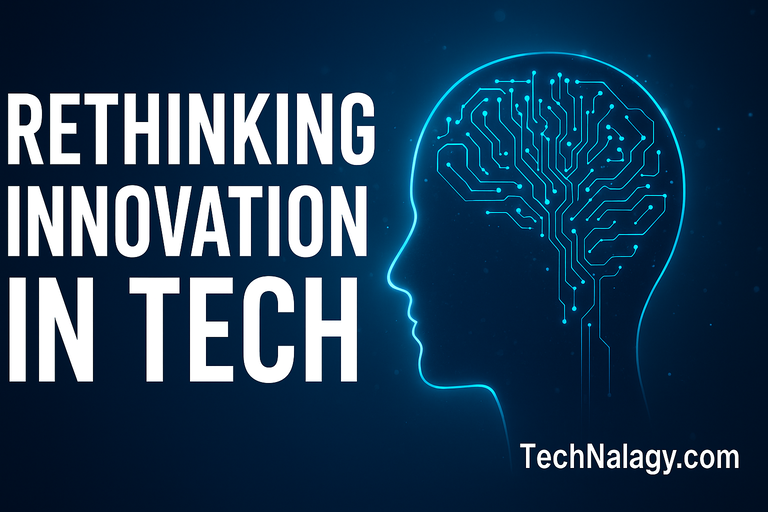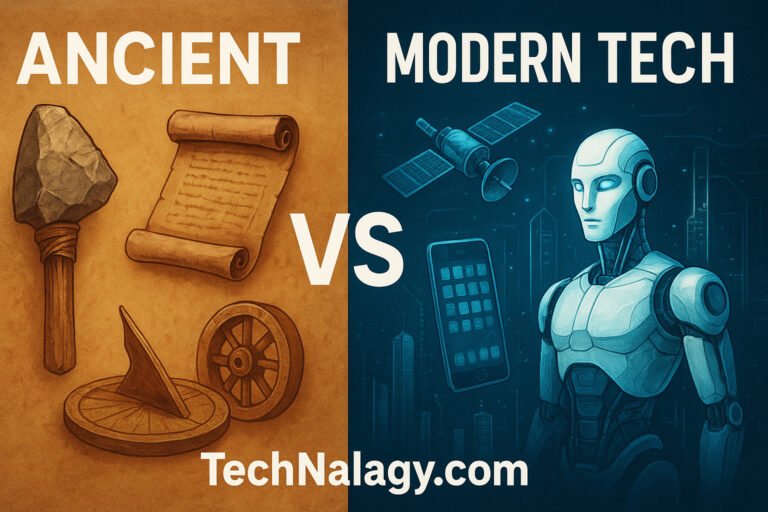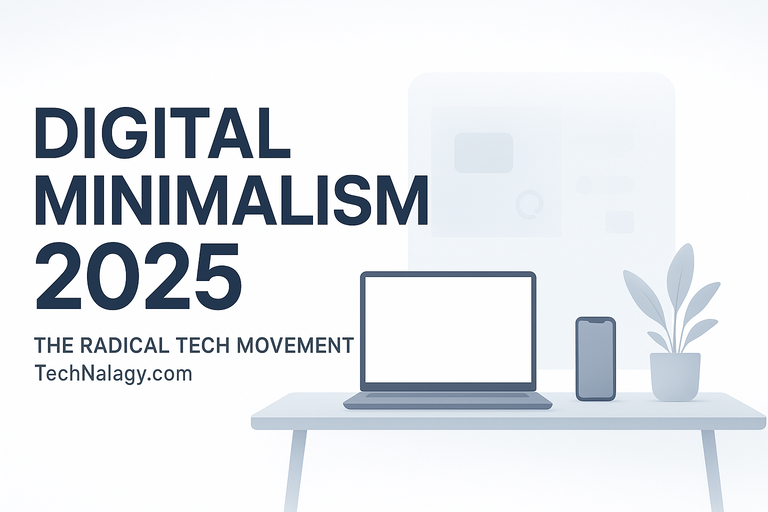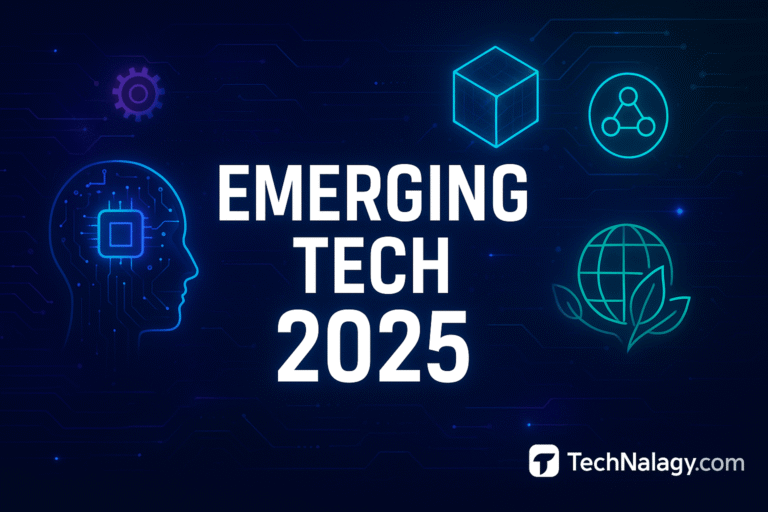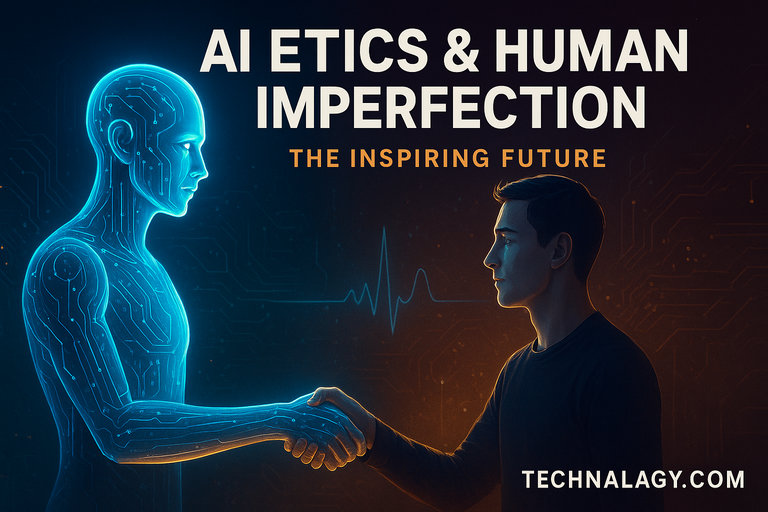🧠 Beyond Algorithms: Why Creativity May Be Humanity’s Last Competitive Edge
In today’s rapidly evolving technological world, the competition between Human Creativity vs AI has become one of the most defining conversations of our time. As artificial intelligence takes bold steps into creative territories—writing poetry, generating music, and designing visuals—many wonder if machines are close to outpacing the human mind.
Yet, despite AI’s brilliance, one truth remains clear: creativity is humanity’s last competitive edge. Machines can replicate logic and patterns, but they cannot replicate the emotional and imaginative depth that defines human originality.
Table of Contents
The New Race Between Humans and Machines
The digital age has ushered in unprecedented advancements in automation and AI. Tools like ChatGPT, Midjourney, and other generative models can now produce everything from essays to illustrations with stunning precision.
However, these advancements also provoke a deeper philosophical question: are machines capable of true creativity, or are they simply imitating human intelligence? While AI systems excel at processing and predicting, they operate within the boundaries of data—whereas human creativity is limitless, emotional, and deeply personal.
This evolving dynamic sets the stage for the ongoing debate of Human Creativity vs AI — a debate that defines not just technology’s role in our world, but our own purpose within it.
Understanding Human Creativity
Human creativity stems from more than just intellect. It’s a product of emotion, experience, and curiosity — all intertwined in the complex structure of the brain. Unlike AI, which generates content from vast datasets, humans create meaning from memories, culture, and feelings.
Neuroscientists describe creativity as the ability to connect unrelated ideas in novel ways. These connections often emerge from experiences of joy, struggle, or discovery — emotional states that no algorithm can truly understand.
As discussed in a MIT Technology Review article, AI can mimic certain creative processes but lacks the intuitive spark that defines originality. This insight reinforces a simple truth: while machines can generate art, only humans can infuse it with soul.
The Rise of Artificial Creativity
Artificial Intelligence has undeniably entered creative fields with force. From AI music generators to automated design tools, the digital landscape is filled with examples of “machine-made” creativity.
But even as these tools evolve, they remain grounded in data, not imagination. AI learns by analyzing existing content and predicting what comes next. This is evident in systems like DALL·E and ChatGPT, which generate creative outputs through pattern recognition, not inspiration.
Interestingly, the next frontier of creative AI lies in symbolic reasoning — where machines combine logic and intuition. This is explained well in our in-depth guide on The Rise of Neuro-Symbolic AI 2025, which explores how hybrid models may bridge the gap between artificial and human thought.
The Limitations of Machine Creativity
Despite its brilliance, AI creativity is synthetic. Machines can produce, but they cannot feel. They can mimic style, but they lack intent and emotion. True creativity isn’t just about novelty — it’s about purpose, empathy, and meaning.
For instance, an AI-generated poem may use perfect rhyme and structure, yet feel hollow because it lacks emotional depth. The difference lies in intentional creation — a uniquely human quality.
Moreover, AI lacks contextual awareness. It can’t understand the emotional history or social nuance behind ideas. This limitation makes it a remarkable tool for assistance, but not replacement.
The Science Behind the Creative Brain
The human brain remains the most complex creative machine ever built. The default mode network (DMN) — responsible for imagination and spontaneous thought — interacts with the executive control network to produce innovation. This interplay allows humans to generate entirely new ideas rather than reassemble existing ones.
Emerging innovations like brain-computer interfaces are starting to explore how technology can amplify creativity itself. For example, advancements in Brain Chip Technology 2025 show how neural enhancements could help artists and thinkers push creative boundaries by blending human intuition with computational speed.
Emotional Intelligence: The Missing AI Ingredient
The greatest gap in the Human Creativity vs AI debate is emotional intelligence. Human creativity thrives on empathy, passion, and emotion — the same forces that drive art, storytelling, and innovation.
AI lacks self-awareness. It can simulate human tone but cannot experience love, fear, or inspiration. That’s why emotionally charged storytelling, music, or visual art resonates on a level AI cannot reach.
Emotional creativity gives meaning to invention. It’s what makes a film scene unforgettable or a song timeless — a dimension beyond the reach of algorithms.
Collaboration Over Competition
Instead of viewing AI as competition, many creators are learning to collaborate with it. AI can serve as an amplifier of human potential, helping writers brainstorm, musicians mix sound, and designers visualize ideas faster than ever.
This partnership is already shaping daily life. As explored in AI in Everyday Life, artificial intelligence is enhancing productivity, creativity, and personal expression across countless industries.
AI may assist with ideation, but humans remain the storytellers — the ones who transform ideas into emotionally resonant works of art.
The Future of Creativity: Augmented, Not Automated
The future of creativity won’t be about humans versus machines — it will be about augmentation. AI will serve as a co-creator, accelerating discovery while humans focus on emotion, meaning, and ethics.
Emerging fields like neuromorphic computing are already paving the way for more intuitive AI systems that learn and adapt like the human brain. But even these advances won’t change the fact that creativity is born from lived experience — something that can’t be programmed.
Ethical Implications and the Value of Originality
As AI-generated content becomes mainstream, new ethical dilemmas emerge: Who owns an AI-generated painting or song? Can machines truly have authorship?
The answers lie in valuing human originality. Creativity isn’t only about output; it’s about purpose, authenticity, and emotion. Society must ensure that technology enhances — not erases — our sense of creative identity.
Conclusion: Creativity — Humanity’s Timeless Edge
In the race between Human Creativity vs AI, machines may process data faster and learn patterns more efficiently, but creativity remains humanity’s timeless advantage.
AI can mimic, assist, and inspire — but it cannot dream. The human imagination, guided by emotion and experience, will always remain the heartbeat of innovation. As we continue building smarter machines, our greatest mission should be to keep nurturing the most powerful intelligence of all — the creative human mind.
🧠 FAQs: Human Creativity vs AI
1. What does Human Creativity vs AI really mean?
Human Creativity vs AI refers to the comparison between the imaginative, emotional, and original thinking of humans and the data-driven, analytical intelligence of machines. It explores how creativity remains a unique human strength even as AI continues to advance.
2. Can AI ever replace human creativity?
No, AI can imitate patterns and generate content, but it lacks emotional awareness and personal experience — the foundations of genuine creativity. Human imagination, intuition, and empathy give our ideas depth that algorithms can’t replicate.
3. How does AI support human creativity?
AI helps creators brainstorm ideas, automate repetitive tasks, and analyze data for inspiration. This partnership allows humans to focus on storytelling, innovation, and originality while AI handles the technical groundwork.
4. Why is human creativity essential in the age of AI?
As automation increases, human creativity becomes our last competitive edge. It drives innovation, cultural expression, and emotional connection — all things machines can enhance but never truly own.
5. Which industries rely most on Human Creativity vs AI collaboration?
Industries like entertainment, design, marketing, and education benefit greatly from combining human imagination with AI precision. This synergy leads to smarter, faster, and more emotionally engaging outcomes.
6. Will future AI ever understand emotions and creativity?
While future AI models may simulate empathy and creativity more convincingly, true understanding of emotion and consciousness remains beyond current technology — keeping humanity’s creative spark unique.

Kamran Khatri is the founder of technalagy.com, where he shares insights on AI, future tech, gadgets, smart homes, and the latest tech news. Passionate about making innovation simple and accessible, he writes guides, reviews, and opinions that help readers stay ahead in the digital world.

